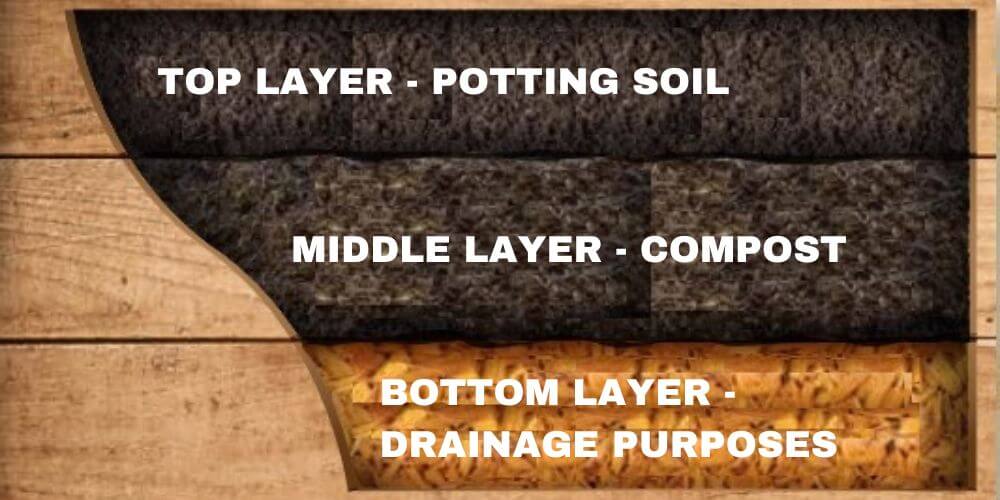Hey there,
Raised bed gardening has become increasingly popular among gardening enthusiasts, and for good reason. This method offers numerous benefits and provides an ideal environment for plants to thrive. In this guide, we will explore every aspect of successful raised bed gardening, from choosing the right location to harvesting your bountiful crops.
Benefits of Raised Bed Gardening
Raised bed gardening offers several advantages over traditional gardening methods. Firstly, the elevated nature of the beds provides better drainage, preventing waterlogging and ensuring healthy root development. Secondly, the loose soil in raised beds allows for improved aeration, resulting in healthier plants. Additionally, raised beds offer better weed control and easier maintenance, making gardening less labor-intensive.
The rising popularity of raised bed gardening can be attributed to these benefits, as well as the increased interest in urban gardening and the desire for sustainable food sources. Many people are now turning to raised bed gardening as an accessible and efficient way to grow their own produce.
Choosing the Right Location for Your Raised Bed Garden
Selecting the ideal location for your raised bed garden is crucial for its success. Start by considering the amount of sunlight your plants will receive. Most vegetables require at least six hours of direct sunlight per day, so choose a location that offers ample exposure.
Next, assess the accessibility of the area. Ensure that the raised bed garden is easily reachable for watering, weeding, and harvesting. Additionally, consider any nearby structures or trees that may cast shadows or compete for nutrients.
Lastly, evaluate the soil quality in the chosen location. The soil should be well-draining and rich in organic matter. If the existing soil is not suitable, you can create a raised bed on top of the ground or use a liner to prevent contamination from the underlying soil.
Selecting the Perfect Bed Material – Building and Preparing Your Raised Bed Garden
When it comes to building your raised bed garden, you have several material options to choose from. Wood is a popular choice due to its affordability and versatility. Cedar and redwood are particularly durable and rot-resistant, making them excellent long-term options. Alternatively, you can use concrete blocks, bricks, or even repurposed materials such as old tires or wine barrels.
Before assembling your raised bed, ensure that the ground is level and clear of any vegetation. This will provide a stable foundation for your garden. Once the bed is constructed, line the bottom with a weed barrier or cardboard to suppress weed growth.
The proper raised bed consists of three layers. The bottom layer serves drainage purposes. The middle layer is the compost, providing nutrient replenishment, while the top layer is the potting soil.
The bottom layer should be made of various sizes of wood material, preferably wood chips. It not only efficiently drains water but also ensures proper aeration.
The middle layer is the compost, serving as a source of humus, nutrients, and trace elements. Its decomposition releases heat, providing the energy necessary for plant growth.
The top layer is a mixture of potting soil. Good potting soil ensures optimal aeration and has a high water-retaining capacity.
Selecting the Perfect Soil
The success of your raised bed garden heavily relies on the quality of the soil you use. Unlike traditional gardening, where you work with the existing soil, raised bed gardening allows you to create the perfect soil environment for your plants.
Start by testing the pH level of your soil using a soil testing kit. Most vegetables prefer a slightly acidic pH between 6 and 7. If the pH is too high or too low, you can adjust it by adding organic matter such as compost or peat moss.
Additionally, ensure that the soil is well-draining to prevent waterlogged roots. This can be achieved by adding perlite or vermiculite to the soil mix. These amendments improve the soil structure and increase its drainage capacity.
Remember to regularly amend the soil in your raised bed garden by adding compost or other organic matter. This will replenish nutrients and maintain soil fertility over time.
Companion Planting in Raised Bed Gardens
Companion planting is a technique used by gardeners to maximize space, deter pests, and enhance plant growth. If you want to read more about companion planting, I recommend this article: Annual Companion Planting Project: Essential Guide for Hobby Gardeners | Bloom and Boughs
In raised bed gardens, companion planting can be particularly beneficial due to the proximity of plants.
One example of successful companion planting in raised bed gardens is the combination of tomatoes, basil, and marigolds. Tomatoes and basil have a mutually beneficial relationship, as basil repels pests that commonly affect tomatoes. Marigolds, on the other hand, deter harmful insects such as nematodes.
Another example is the combination of beans, corn, and squash. This trio, known as the Three Sisters, is a traditional Native American planting technique. The corn provides support for the beans, while the squash acts as a ground cover, preventing weed growth and conserving moisture.
By carefully selecting compatible plants and utilizing companion planting techniques, you can create a harmonious and productive raised bed garden.
Proper Planting Techniques
When planting in raised bed gardens, it is important to follow proper techniques to ensure the healthy growth of your plants.
Start by spacing your plants according to their specific requirements. Overcrowding can lead to poor airflow and an increased risk of disease. Refer to the seed packets or plant labels for recommended spacing guidelines.
Water your newly planted seedlings thoroughly to settle the soil and provide hydration. Be mindful of not overwatering, as raised beds drain more efficiently than traditional garden beds.
Fertilizing for Optimal Growth
To ensure optimal growth and productivity, it is important to fertilize your raised bed garden appropriately. Organic fertilizers are a popular choice as they provide slow-release nutrients and improve soil health.
Before applying any fertilizer, test your soil to determine its nutrient deficiencies. This will help you select the right fertilizer and avoid overapplication. A soil test kit can provide accurate results and recommendations for specific nutrient amendments.
When applying fertilizer, follow the recommended dosage and timing instructions. Overfertilization can lead to nutrient imbalances and environmental pollution. Consider using compost or well-rotted manure as natural fertilizers, as they provide a balanced mix of nutrients and improve soil structure.
Vertical Gardening for Space Optimization
If space is limited in your raised bed garden, vertical gardening techniques can help maximize your growing area. Vertical gardening involves growing plants vertically, utilizing trellises, stakes, or other support structures.
Vining plants such as tomatoes, cucumbers, and beans are excellent candidates for vertical gardening. By training them to grow upwards, you can save valuable ground space and increase your crop yield. Additionally, vertical gardening allows for better air circulation, reducing the risk of fungal diseases.
When implementing vertical gardening in your raised bed, ensure that your support structures are sturdy and properly anchored. Regularly monitor the growth of your plants and provide additional support as needed.
Watering Strategies for Raised Bed Gardens
Proper watering is crucial for the success of your raised bed garden. Unlike traditional gardens, raised beds tend to dry out more quickly due to their improved drainage. Therefore, it is important to establish a consistent watering routine.
Water deeply and infrequently to encourage deep root growth. Shallow and frequent watering can lead to weak roots and increased susceptibility to drought. Aim to water your raised bed garden at the base of the plants, avoiding wetting the foliage, which can promote disease.
Consider using a drip irrigation system or soaker hoses to deliver water directly to the root zone. These methods help conserve water and ensure efficient hydration.
Monitor the moisture levels in your raised bed garden regularly. The top inch of soil should be slightly moist, but not waterlogged. Adjust your watering frequency and duration based on weather conditions and the specific needs of your plants.
Pest Management in Raised Bed Gardens – Early Detection and Intervention
Pests can pose a significant threat to the health and productivity of your raised bed garden. Early detection and intervention are key to preventing and managing pest infestations.
Regularly inspect your plants for signs of pest damage, such as chewed leaves, holes, or discoloration. Be vigilant in identifying common garden pests, such as aphids, caterpillars, and slugs.
Implement preventative measures such as companion planting, as mentioned earlier. Certain plants, such as marigolds, chives, and garlic, have natural pest-repellent properties. Interplanting these with your susceptible crops can help deter pests.
If pest populations become overwhelming, consider using organic pest control methods such as insecticidal soaps, neem oil, or diatomaceous earth. These options are effective in managing pests while minimizing harm to beneficial insects and the environment.
Seasonal Maintenance Tips
Seasonal maintenance plays a crucial role in the long-term success of your raised bed garden. Here are some tips to keep your garden thriving throughout the year.
In the spring, prepare your raised bed by removing any debris or weeds that have accumulated over the winter. Add fresh compost or organic matter to replenish the soil nutrients. Start planting cool-season crops such as lettuce, spinach, and peas.
During the summer, monitor your garden for signs of stress, such as wilting or yellowing leaves. Water regularly and provide shade for heat-sensitive plants. Harvest your summer crops when they are at their peak ripeness.
In the fall, clean up your garden by removing spent plants and debris. Plant cool-season crops for a fall harvest, such as carrots, beets, and kale. Apply a layer of mulch to protect the soil from winter frost.
During the winter, protect your raised bed garden from extreme cold by covering it with a frost cloth or plastic sheeting. This will help insulate the soil and prevent damage to your plants. Monitor the moisture levels and water sparingly during dormant periods.
Harvesting Your Crops from Your Raised Bed Garden
The moment of harvest is the culmination of your hard work and dedication. Proper harvesting techniques ensure that you enjoy the full flavor and nutritional benefits of your homegrown produce.
Harvest your crops when they are at their peak ripeness. Refer to seed packets or plant labels for specific harvesting guidelines. Use clean, sharp tools to prevent damage to the plants.
When harvesting leafy greens, such as lettuce or kale, pick the outer leaves first, allowing the inner leaves to continue growing. For fruits and vegetables, gently twist or cut them from the plant, taking care not to damage neighboring foliage.
Enjoy the fruits of your labor immediately or store them properly for later use. Proper storage, such as refrigeration or canning, will help preserve the flavor and quality of your harvested crops.
Conclusion
Raised bed gardening offers many benefits and has gained popularity among gardening enthusiasts. With this comprehensive guide, you’ve gained enough knowledge to start creating your own raised bed, and then enjoy the fruits of your labor.
Remember to choose the right location, select appropriate bed materials, and prepare the perfect soil for your raised bed garden. Utilize companion planting techniques, proper planting methods, and efficient watering strategies. Implement pest management practices and perform seasonal maintenance tasks to ensure the longevity and productivity of your garden.
With dedication and care, your raised bed garden will flourish, providing you with a bountiful harvest and a fulfilling gardening experience. Happy gardening!








0 Comments